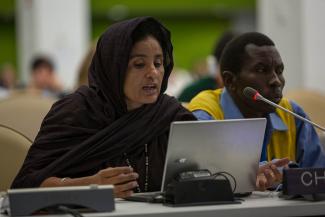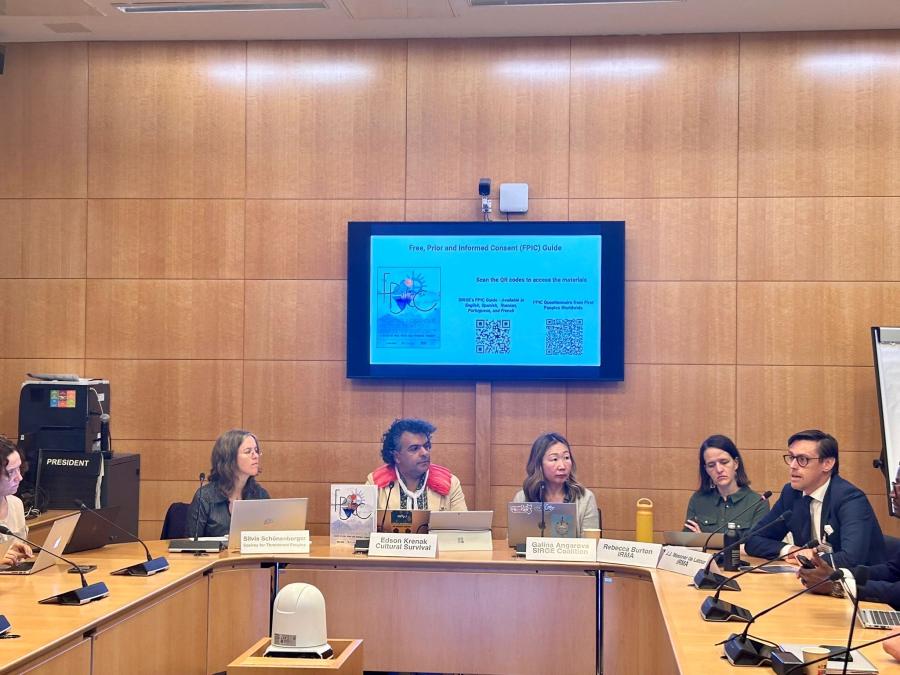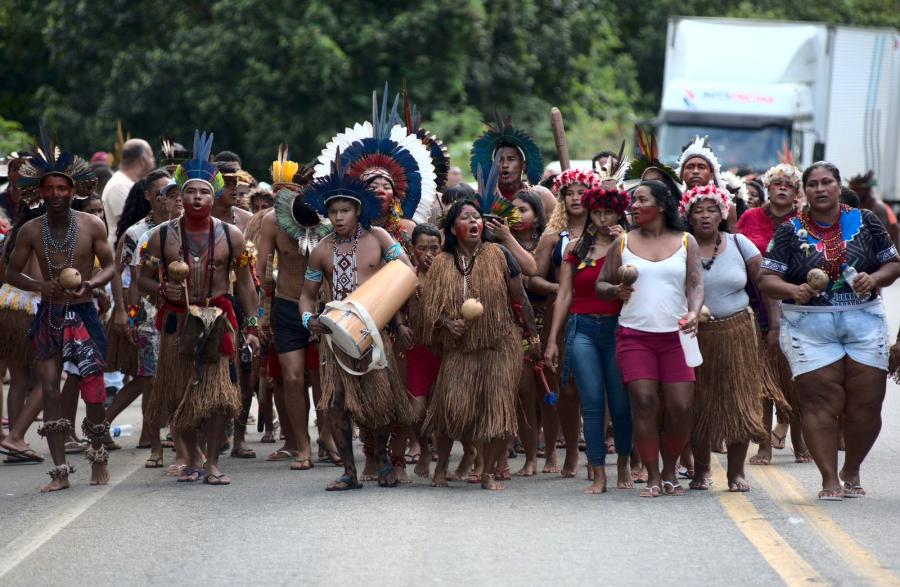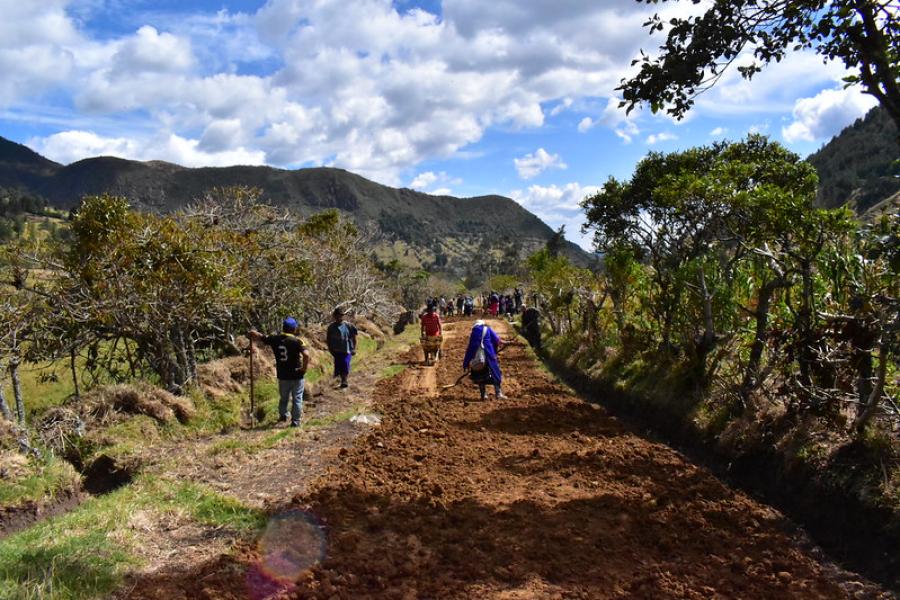

The so-called UN World Conference on Indigenous Peoples, to be held this year on September 22–23, is really a High Level Plenary Meeting of the General Assembly. No one should be fooled by the title. It will have color and pageantry supplied by the Indigenous Peoples who attend, and the General Assembly hall and rooms will be filled with Indigenous representatives dressed in their traditional regalia. But this was not the original intent. In 2010, the government of Bolivia floated a resolution calling for a World Conference on Indigenous Peoples. Not all states were enthusiastic about the idea, so a compromise was reached: the High Level Plenary Meeting was renamed the UN World Conference on Indigenous Peoples.
High level plenary meetings are very different from world conferences. World conferences are much larger, with preparatory meetings held in the five UN regions of the world the year before. They are held in large venues to allow for many participants, side events, and a trade show. A high level plenary meeting is just that: an opening plenary meeting of the UN General Assembly, some roundtable discussions, and a closing ceremony. Unfortunately, not all Indigenous participants will be able to fit in the General Assembly room for this session; only about 350 will be allowed in. The remaiing delegates will have to sit in a large overflow room somewhere else in the building.
The opening ceremonies should last all morning, and in the afternoon there will be two roundtables held in two large, separate rooms at the same time. The first will be about “United Nations system action to implement the rights of Indigenous Peoples.” The other will cover “Implementation of the rights of Indigenous Peoples at the national and local level.” A third roundtable on Tuesday afternoon will discuss the theme of “Indigenous Peoples’ lands, territories, and resources.”
Concurrently, there will be an interactive panel discussion on “Indigenous priorities for the post-2015 sustainable development agenda.” In a first for the UN, each of the roundtables and the panel discussions will have one state and one Indigenous co-chair. There is no session scheduled for Tuesday morning due to the regular High Level meeting taking place in the General Assembly room on climate change.
The Outcome Document
The most important part of any UN world conference or high level plenary meeting is the Outcome Document. More important than all the speeches and ceremonies, the Outcome Document is the political declaration that will be agreed to by states during the conference. It has the weight of a UN General Assembly Resolution. Negotiated between states and Indigenous representatives, the Outcome Document will be the deciding factor on whether this High Level Plenary Meeting called the UN World Conference on Indigenous Peoples is deemed a success. However, the document itself will be decided before the conference even opens, on September 15 at the latest, when the final draft is released in the version to be voted on during the meeting.
The Outcome Document should be a statement by the UN uplifting the rights of Indigenous Peoples and promoting action to implement those rights. The Declaration on the Rights of Indigenous Peoples is the standard set by the UN General Assembly on September 13, 2007, and it should be a simple matter to reiterate those rights and put them into action. If only it were so.
The biggest concern of Indigenous Peoples is that governments will attempt to limit or redefine their rights. So, when the first drafts of the outcome documents appeared, Indigenous Peoples looked for paragraphs that would try to reduce those rights. A number of Indigenous representatives wanted a paragraph stating “we reaffirm that nothing in this outcome document may be construed as diminishing or extinguishing the rights [of] Indigenous Peoples.” However, states did not want negative text in the document, so it was not included. Instead, a delegation of North American representatives proposed language to confirm the states’ “solemn commitment to uphold and in no way diminish the rights of Indigenous Peoples as contained in the UN Declaration on the Rights of Indigenous Peoples.”
The issue of Free, Prior and Informed Consent is another right states have difficulty with. It was mentioned a few times in the zero draft but ultimately reduced to one paragraph. The drafters made a strategic attempt to put the term of Free, Prior and Informed Consent into a “chapeau” at the beginning of the document to imply that this right applies throughout the document. Here is the proposed text: “In adopting this outcome document, we commit to consult and cooperate in good faith with Indigenous Peoples through their own representative institutions in order to obtain their Free, Prior and Informed Consent before adopting and implementing legislative or administrative measures that may affect them.”
Also of concern is the qualifying term, “where appropriate.” A number of paragraphs contain this phrase, and it puts states in a strong position to decide what is appropriate and what is not. There is no mechanism for Indigenous Peoples to have input on what is appropriate. Likewise for the provision of “adequate resources;” again, it gives all the power to states to decide what is adequate. There is no provision for Indigenous Peoples to have a voice in deciding what is adequate or appropriate.
In Paragraph 14 of the first draft, on the issue of Indigenous Peoples’ justice institutions, states commit to coordinate and dialogue “where those exist.” This is limiting, because who decides if they exist? There are many Indigenous justice systems that are not documented or recorded. That does not mean they do not exist.
Indigenous representatives were united on several important paragraphs, such as the elimination of violence against Indigenous women and girls, the establishment of an oversight body on the implementation of the Declaration, the establishment of a higher status of Indigenous representatives in the UN system, the appointment of a “High Official” in the office of the Secretary General to promote the rights of Indigenous Peoples in the UN system, and the protection sites, sacred objects, and repatriation of remains.
States were generally very positive on the issue of violence against Indigenous women and girls and had many suggested word changes. However, they did focus on the individual rights of women and not the collective rights on Indigenous Peoples.
In regard to a “High Official,” states were more concerned about the financial impact of such a position in the UN system. Since the UN does not want to expand its budget, the issue of an oversight body had to be within current budget allocations. So Indigenous Peoples proposed that the Expert Mechanism on the Rights of Indigenous Peoples be expanded to achieve this goal.
The final drafting and the bottom line
The most dangerous part of the negotiations is the final drafting, in what is called the intergovernmental process. Indigenous Peoples were fully engaged in the consultations held through August 19, but after that date, the negotiations will be only among states; Indigenous representatives will not be in the room. Beginning September 3, states will meet to go over the text, paragraph by paragraph. Meanwhile, Indigenous Peoples must rely on “friendly” states to hold back any attempts at weakening the rights of Indigenous Peoples. Two Indigenous advisors will be in the room; however, their role is to facilitate the discussions, not necessarily to advocate for Indigenous Peoples.
If the Outcome Document is perceived to undermine the rights of Indigenous Peoples in any way, the result will be disastrous for Indigenous Peoples and the United Nations. If Indigenous Peoples cannot get justice in the UN, where else can they turn? What value is the UN to them? This so-called conference is a golden opportunity for the UN to be more than just the sum of its parts, a chance to be more than a private club of nation-states. It can seize the opportunity to include Indigenous Peoples and make itself more representative of humankind.
Read the latest draft of the Outcome Document here.
—Kenneth Deer (Mohawk) is a journalist who has been advocating for Indigenous rights at the UN in New York and Geneva.



